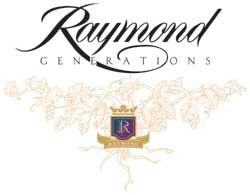John Brown has been a wine and food columnist in West Virginia since the 1980’s. His regular columns appear in the Charleston (WV) Gazette-Mail under the title Vines & Vittles.
Tasting Wines Blind: A real eye-opener
The Wine Shop at Capitol Market recently held their annual Claret tasting. Claret is a term the British have used for centuries to describe the red wines of Bordeaux. And while this Claret tasting usually features a Bordeaux wine or two, it is also expanded to include cabernet-based wines from around the world. The neat thing about this tasting is that the wines are tasted blind. Now, I know what some of you reprobates are thinking, but no -- this is not a wine-chugging contest where the object is to achieve a state of blindness.
This is a tasting where the bottles are put in paper bags so the labels are not visible and so tasters can evaluate them objectively and not be unduly influenced by “pedigree” or price. Unfortunately, I was unable to attend the tasting, but the results are published below by the Wine Shop’s Ted Armbrecht (who, I might add, has an excellent palate.) The tasting was conducted by expert taster Andy MacQueen, who was featured on last week's WineBoy webcast. Ted’s descriptions of the wines and their attributes reflect the comments of tasters who rated each of the wines. I hope this provides you with another tool when shopping for that special gift this coming holiday season.
Also, many of these wines in the tasting are available at wine shops throughout the Kanawha Valley and the state. In Ted’s words: “We chose seven wines from around the world that are Cabernet Sauvignon-based and spread across the price range. We brown bag them and taste them blind, thus no bias based on price or label recognition. The results are usually surprising and inevitably reveal a winner that might otherwise go overlooked.
"This year, as in last year, we did have a clear favorite and it was the older vintage Napa Cabernet that did not disappoint. The Raymond Generations Reserve Cabernet Sauvignon 1999 from Napa Valley showed why this appellation is so highly regarded. The Raymond showed nice fruit layered over typical Cabernet aromas of green olive and cassis. The nose continually evolved and showed layer after layer of tar, mint, etc. Great nuance and a beautiful finish. This one really stood out, and it should because it was the oldest vintage we tasted and the most expensive at $56.99.
The biggest surprise of the day had to be the Infinitus Cabernet Sauvignon 2005 from Spain. This wine had aromas of deep, rich, black fruit and eucalyptus. Fruit forward in style with medium tannins, this wine is crafted to please. Opulent and nicely textured, this wine is a bargain at $8.99/btl. Behind the Raymond, this cab ran away with a number of votes!
Another real favorite was the Taltarni 3 Monks Cabernet/Merlot 2005 from Australia. This wine, like the Raymond, offered a beautiful nose of green olives and black fruit. Bigger and somewhat more angular than the Raymond, it was layered with lots of big fruit, tar and structured tannins. Andy rightfully pointed out that this wine suffered somewhat in the voting because it followed the older and more nuanced Raymond. In spite of that, this wine was very popular and at $18.99/btl., a little easier on the wallet!
The Terra Andina Reserva Cabernet Sauvignon 2006 from Chile also had a good showing. The nose offered aromas of ultra ripe, dark fruit with mint and cassis. The mouth feel was layered and opulent, with mellow, integrated tannins that linger. This was one of my favorites, and the price is $12.99/btl.
The Owen Roe Sharecropper's Cabernet Sauvignon 2006 from the Columbia Valley was indicative of the style of wine that Owen Roe prefers. Big ultra-ripe fruit on the nose with hints of cassis and eucalyptus. The mouth feel is fruit forward, sweet and unctuous. This is for the cab lover who likes a big, sexy mouth-filling cabernet. The cost is $24.99/btl.
 The final two wines were both well-liked and stood out for unique reasons. The Chateau Grimard Bordeaux 2005 ($10.99/btl.) was unique in that it did not stick out like a sore thumb as have the Bordeaux blends included in this tasting in past years. It had an elegant nose although somewhat more closed (maybe this should have been the hint!). It was subtle, medium-bodied and had a polished finish.
The final two wines were both well-liked and stood out for unique reasons. The Chateau Grimard Bordeaux 2005 ($10.99/btl.) was unique in that it did not stick out like a sore thumb as have the Bordeaux blends included in this tasting in past years. It had an elegant nose although somewhat more closed (maybe this should have been the hint!). It was subtle, medium-bodied and had a polished finish.
The Picada 15 2005 ($11.99/btl.) is the only wine we carry that comes from the Patagonia region of Argentina. This is a blend of Cabernet, Merlot and Pinot Noir! The Pinot Noir would explain the lighter body and the softer, mellow oak tannins.”
Thanks, Ted and Andy.

